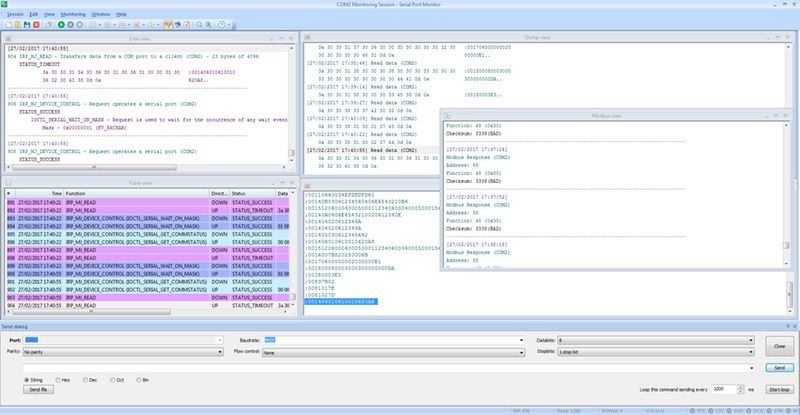Submit your email address to get a link for quick download on your desktop and get started!
A software tool for emulating COM port activity
Serial Port Monitor is an advanced tool to emulate serial data flow. Thanks to the builtin terminal, the software can easily imitate sending data to any COM port available in the system. With a slew of powerful features, the app will be especially helpful for developing, testing, or optimizing serial devices, various kinds of device drivers, or applications communicating with COM ports.

The advanced features of Serial Port Monitor are designed to cater to users’ most diverse serial data emulation needs.
The software is not only capable of working in a full duplex mode, that is, send and receive serial data simultaneously, it also supports various data formats, like binary, octal, decimal, or hexadecimal. What’s more, the app lets you send information right from a file.
Once the data is received from a serial device, it can be recorded to a separate file and sent to another peripheral communicating with the system through a COM port. This way, you can check the reaction of any device to certain serial data.
In addition to a full suite of data monitoring tools, Professional edition of Serial Port Monitor offers versatile configuration options. Simply put, Serial Port Monitor gives you control over adjustments of baudrate, number of databits and stopbits, parity, flow control type and more.

The software sniffs and displays data going through the monitored COM port in real time. In practice, that means every time you detect a problem during interaction with a serial port, you can solve it immediately.